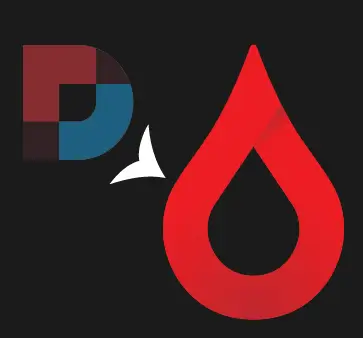DNN to Oqtane Migration


Flagship public website with marketing content and client resources
Insurance
A major life and health insurance company
The USA
Oqtane, Bootstrap, Microsoft Azure, Azure SQL Database
Architecture design, migration automation, application development, custom module development, cloud deployment
The client was using DNN as the CMS for their flagship website, which had grown complex over the years, with hundreds of pages and thousands of modules. The platform’s outdated infrastructure caused frequent instabilities, and customizations made it impossible to upgrade, exposing the system to security vulnerabilities.
As a result, due to persistent site fluctuation, legacy constraints preventing DNN upgrades, and critical security vulnerabilities, the client decided to modernize their website by migrating to Oqtane. They needed to do this while transitioning to a cloud-based infrastructure on Microsoft Azure for scalability and cost efficiency.
Our overarching requirement for the migration was to create an exact replica of the existing site – i.e., transition all of the content and assets to the new CMS. We had to do this without disrupting the user experience.
A critical part of the process involved updating all hyperlinks and links to resources, such as images and artifacts. As the migration led to new URL addresses for many pages, ensuring all links remained functional was a complex task.
In essence, we had to migrate all content and eliminate legacy issues while maintaining the integrity of design, functionality, and workflows.

The client's website contained an extensive amount of content, including hundreds of pages, thousands of modules, and numerous files. And, obviously, we had to migrate all of these without losing data or functionality.
The content was also heavily integrated with third-party systems and applications, which added another layer of complexity. Accurate and seamless transfer was critical to avoid disrupting the site's operations and user experience.
First, we conducted an analysis of the DNN system to identify all of its critical dependencies and functionality. This way, we could understand the quantity and types of content being managed, as well as the integrations with third-party applications and systems the website had. With this information, we were able to create an estimate for the various migration tasks required to move to Oqtane.
We used our Automated Migration Utility to migrate all of the core content types from the DNN site to Oqtane, including pages, modules, folders, files, permissions, users, roles, etc.
This utility not only made the migration process smooth but also saved us a tremendous amount of time, budget, and effort. We were able to run it multiple times throughout the content migration process to refresh the environment with the latest content.
As was already said, the client’s site contained hundreds of pages of blogs and articles. Consequently, a reliable search engine was essential for users to quickly locate content.
The existing DNN site had a search capability, but Oqtane did not yet have this functionality natively (as it was still on the platform roadmap). The challenge was to create a search solution that matched the DNN engine’s capabilities while improving upon its limitations.
At the same time, building a new search engine required not only replicating the core functionality but also ensuring compatibility with Oqtane’s architecture. Not to mention that it needed to handle the large volume of content efficiently and integrate seamlessly into the site without performance issues.
We designed and implemented a powerful search engine for Oqtane, drawing inspiration from the DNN search engine but enhancing it to meet modern standards.
The new search engine was extensible, faster, and aligned with Oqtane's product philosophy. As part of the 5.2.0 release, this feature became a significant improvement for both the client’s website and the Oqtane platform itself.
The DNN site used the “Porto” theme by Mandeeps, a popular skin based on Bootstrap 4.4.1, a version released over six years ago. The theme was no longer compatible with modern web standards. It was difficult to maintain and optimize for performance. Moreover, the outdated Bootstrap version limited the site's scalability and ability to incorporate newer features.
Migrating to Oqtane introduced the opportunity to modernize the design, but retaining the existing theme would have meant dealing with bloated, unnecessary features from the latest Porto version. This complexity risked slowing down the site and adding extra development effort.
We developed a custom Oqtane theme using the latest Bootstrap version (5.3.3).
This approach ensured the theme was lightweight, aligned with modern web standards, and fully customized to reflect the client's branding and color palette. The new theme improved performance and reduced complexity, offering a clean foundation for future enhancements.
The DNN site featured numerous custom data entry forms built with a third-party DNN module. These forms were deeply integrated into the site’s workflows, handling critical functions like file uploads with specific validation and approval processes. Since Oqtane and DNN use entirely different tech stacks, to migrate these forms, we needed to find or create equivalent solutions in Oqtane.
The added challenge was that some functionalities in the DNN forms were highly specialized and not readily available in any existing Oqtane modules. Without a reliable solution, the client risked losing key business workflows during migration.
The client wanted to retain the ability to maintain their own custom forms, so we initially considered using the DynamicForms module for Oqtane by Studio-Elf. DynamicForms is a commercial form builder module and has a lot of capabilities, however it was missing some features which the client was depending on. Studio-Elf enhanced their module to replicate the missing features from the DNN forms module. Later during user acceptance testing, the client decided that they would instead prefer to use HubSpot for these forms so we created a simple Oqtane integration to meet their needs.
For unique workflows, such as the custom file upload process, we developed a new Oqtane module tailored to the client’s needs. These modules also incorporated business automation enhancements, streamlining operations and reducing manual effort for end-users.
The client’s site heavily relied on third-party DNN modules, such as Live Blog and Live Articles by Mandeeps, to manage and display content. These modules were crucial for the site's functionality but were built on a tech stack incompatible with Oqtane, posing a significant barrier to the migration.
We decided to enhance the open-source Oqtane Blog module to include the features from Live Blog and Live Articles that the client was utilizing. We customized this module based on the client's specific needs. This way, we could include features from the existing tools, allowing the seamless migration of hundreds of blogs and articles.
Thanks to detailed analysis, planning, and the use of the Automated Migration Utility, we ensured a seamless transition of all content, features, and functionalities from DNN to Oqtane. The website's end-users experienced no disruptions or noticeable changes during the migration.
The Oqtane framework was installed on Microsoft Azure using a standard Azure App Service and an Azure SQL Database. We eliminated the old system’s stability issues like crashes and server restarts. The new setup is fast, scalable, and reliable, ensuring the site runs effortlessly, even under heavy usage.
Transitioning to Oqtane and a cloud-based infrastructure addressed the critical security vulnerabilities in the outdated DNN system. The modern CMS architecture, combined with Azure's security features, ensures that the client’s website is well-protected against current and emerging threats.
The client got fully tailored modules and features. These personalized solutions not only replicated the previous system’s functionalities but also improved overall usability and streamlined workflows, adding measurable value to the client’s operations.
Legacy CMS: DNN
Target CMS: Oqtane
Infrastructure: Microsoft Azure (Azure App Service and Azure SQL Database)
Design framework: Bootstrap (migrated from 4.4.1 to 5.3.3)
Tools: DynamicForms by Studio-Elf, proprietary Automated Migration Utility